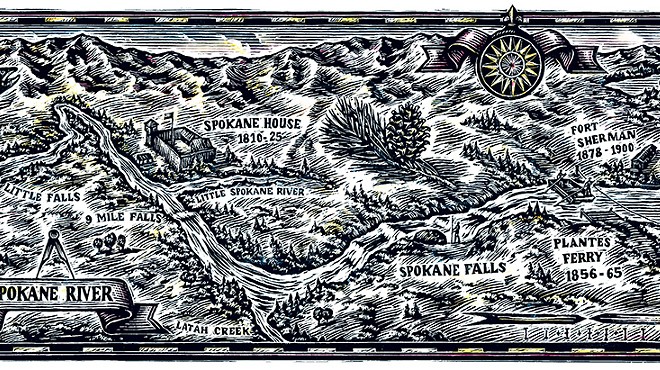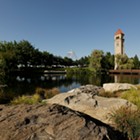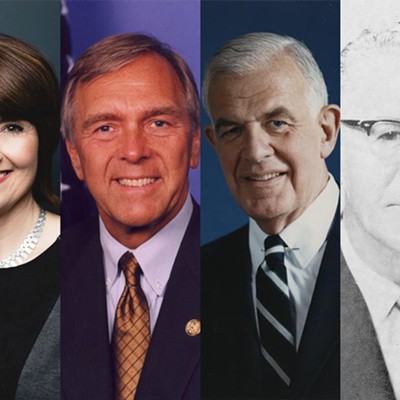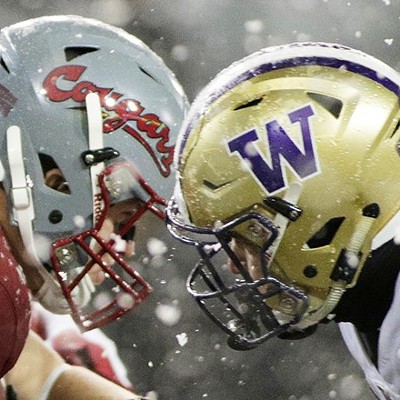Why are we here? Existentially speaking, that's one for the philosophers. But physically speaking, it's simple: the Spokane River.
Some might argue we're here because the railroad came through, or later Interstate 90 paved its way across the Inland Northwest. But before all that, the blue highway that mattered most was the Spokane River, draining Coeur d'Alene Lake and its massive watershed, ultimately emptying into the Columbia River, one of the world's mightiest waterways. When we look around at everything that has been built, all the people who have moved here, lived and died in this region, it's because of the river.
Native inhabitants congregated around the fish; the river, quite literally, sustained them. When Europeans came, they saw falling water in another way. James Glover, the father of modern Spokane, was captivated by the beauty of the falls, but he also saw its power. He started a mill nearby, and the people started coming.
They haven't stopped coming yet, but these days few seem to make the connection Glover did between the river and why this is home. Over the years, the river has been obscured from view by industry, recovered in a burst of idealism and civic pride in 1974, and again set aside, perhaps by nothing more than the bustle of our daily lives. Today, new efforts are emerging to honor and recognize the river.
Riverfront Park, the Centennial Trail, Riverside State Park and other parks and viewpoints keep it close for many, but the river's true heart, the aquifer, fits that old saw: out of sight, out of mind. A happy geological accident, the aquifer sustains us today, as the fish sustained earlier generations who lived here. While those tribal people clearly understood the value of the river, it's not altogether clear that we appreciate the unique gift of so plentiful and clean a water supply. As tenants on this land, we seem to do just fine, taking what we need and using it to create a high quality of life. But as the river is stressed to sustain more and more people and industries each year, we need to be more than tenants — we need to become caretakers.
In an effort to draw attention to the Spokane River and its place in our lives, we offer this package of stories. Jack Nisbet traces the history of the river prior to permanent settlement. William Youngs looks at how Spokane has struggled to embrace the river ever since that settlement occurred. Poet Tom Davis relates the rhythms of life along the river. Angler Paul Quinnett writes about the emotional impact of having a river in your back pocket. And John Osborn outlines the challenges the river and aquifer face. Portraits of our writers are by Inlander staff photographer Amy Sinisterra, and the map is by Denver artist Ken Perkins.
Publication date: 06/05/03





















